Common-Mode Noise Estimation for a Boost Converter with Substitution Theorem
Abstract
1. Introduction
2. Substitution Model for Boost Converters and the Measurement-Based Noise Estimation Methodology
2.1. Substitution Model
2.2. Measurement-Based CM Current Estimation Methodology
2.2.1. Noise Estimation Method for the Boost Converter
2.2.2. One-Step Measurement Method for the Noise Transfer Functions
2.3. Considerations in Real Practice
2.3.1. Substitution Model with Current Sources
2.3.2. Considerations for Transfer Function Measurements
3. Experimental Verification
3.1. Measurement Setup
3.2. Comparison of Measured and Calculated Noise
4. Dominant Noise Source Identification and Noise Mitigation Methods
4.1. Noise Source Identification
4.2. Noise Mitigation Techniques
5. Conclusions
Author Contributions
Funding
Data Availability Statement
Conflicts of Interest
References
- Kim, K.; Shim, H.W.; Hwang, C. Analysis and Solution for RF Interference Caused by PMIC Noise in Mobile Platforms. IEEE Trans. Electromagn. Compat. 2019, 62, 682–690. [Google Scholar] [CrossRef]
- Shinde, S.; Masuda, K.; Shen, G.; Patnaik, A.; Makharashvili, T.; Pommerenke, D.; Khilkevich, V. Radiated EMI estimation from DC–DC converters with attached cables based on terminal equivalent circuit modeling. IEEE Trans. Electromagn. Compat. 2017, 60, 1769–1776. [Google Scholar] [CrossRef]
- Zhang, Y.; Wang, S.; Chu, Y. Analysis and Comparison of the Radiated Electromagnetic Interference Generated by Power Converters with Si MOSFET s and GaN HEMTs. IEEE Trans. Power Electron. 2020, 35, 8050–8062. [Google Scholar] [CrossRef]
- Yao, J.; Li, Y.; Wang, S.; Huang, X.; Lyu, X. Modeling and Reduction of Radiated EMI in a GaN IC-Based Active Clamp Flyback Adapter. IEEE Trans. Power Electron. 2020, 36, 5440–5449. [Google Scholar] [CrossRef]
- Zhang, J.; Lu, T.; Zhang, W.; Bian, X.; Cui, X. Characteristics and influence factors of radiated disturbance induced by IGBT switching. IEEE Trans. Power Electron. 2019, 34, 11833–11842. [Google Scholar] [CrossRef]
- Sangwan, V.; Kapoor, D.; Tan, C.M.; Lin, C.H.; Chiu, H.C. High-frequency electromagnetic simulation and optimization for GaN-HEMT power amplifier IC. IEEE Trans. Electromagn. Compat. 2018, 61, 564–571. [Google Scholar] [CrossRef]
- Park, H.H.; Park, H.B.; Lee, H.S. A simple method of estimating the radiated emission from a cable attached to a mobile device. IEEE Trans. Electromagn. Compat. 2012, 55, 257–264. [Google Scholar] [CrossRef]
- Oswald, N.; Anthony, P.; McNeill, N.; Stark, B.H. An experimental investigation of the tradeoff between switching losses and EMI generation with hard-switched all-Si, Si-SiC, and all-SiC device combinations. IEEE Trans. Power Electron. 2013, 29, 2393–2407. [Google Scholar] [CrossRef]
- Bishnoi, H.; Mattavelli, P.; Burgos, R.; Boroyevich, D. EMI behavioral models of DC-fed three-phase motor drive systems. IEEE Trans. Power Electron. 2013, 29, 4633–4645. [Google Scholar] [CrossRef]
- Song, C.; Kim, H.; Kim, Y.; Kim, D.; Jeong, S.; Cho, Y.; Lee, S.; Ahn, S.; Kim, J. EMI reduction methods in wireless power transfer system for drone electrical charger using tightly coupled three-phase resonant magnetic field. IEEE Trans. Ind. Electron. 2018, 65, 6839–6849. [Google Scholar] [CrossRef]
- Shen, G.; Shinde, S.; Patnaik, A.; Pommerenke, D.; Aichele, H.; Keller, C.; Boettcher, M.; Khilkevich, V. Terminal modeling of DC–DC converters with stochastic behavior. IEEE Trans. Electromagn. Compat. 2018, 60, 2011–2018. [Google Scholar] [CrossRef]
- Bishnoi, H.; Baisden, A.C.; Mattavelli, P.; Boroyevich, D. Analysis of EMI terminal modeling of switched power converters. IEEE Trans. Power Electron. 2012, 27, 3924–3933. [Google Scholar] [CrossRef]
- Liu, D.; Wang, Y.; Kautz, R.W.; Altunyurt, N.; Chandra, S.; Fan, J. Accurate evaluation of field interactions between cable harness and vehicle body by a multiple scattering method. IEEE Trans. Electromagn. Compat. 2016, 59, 383–393. [Google Scholar] [CrossRef]
- Wang, S.; Kong, P.; Lee, F.C. Common mode noise reduction for boost converters using general balance technique. IEEE Trans. Power Electron. 2007, 22, 1410–1416. [Google Scholar] [CrossRef]
- Yao, J.; Wang, S.; Luo, Z. Modeling, Analysis, and Reduction of Radiated EMI Due to the Voltage across Input and Output Cables in an Automotive Non-isolated Power Converter. IEEE Trans. Power Electron. 2021, 37, 5455–5465. [Google Scholar] [CrossRef]
- Pozar, D.M. Microwave Engineering; John Wiley & Sons: Hoboken, NJ, USA, 2011. [Google Scholar]
- Huang, A.; Wang, X.; Zhang, H.; Hwang, C.; Pommerenke, D.; Fan, J. Improved Current Shut Characterization Method for Ferrite Loss Characterization. IEEE Trans. Power Electron. 2022, 37, 8290–8300. [Google Scholar] [CrossRef]
- Zhao, Q.; Tao, F.; Lee, F.C.; Xu, P.; Wei, J. A simple and effective method to alleviate the rectifier reverse-recovery problem in continuous-current-mode boost converters. IEEE Trans. Power Electron. 2001, 16, 649–658. [Google Scholar] [CrossRef]
- Yuan, X.; Walder, S.; Oswald, N. EMI generation characteristics of SiC and Si diodes: Influence of reverse-recovery characteristics. IEEE Trans. Power Electron. 2014, 30, 1131–1136. [Google Scholar] [CrossRef]
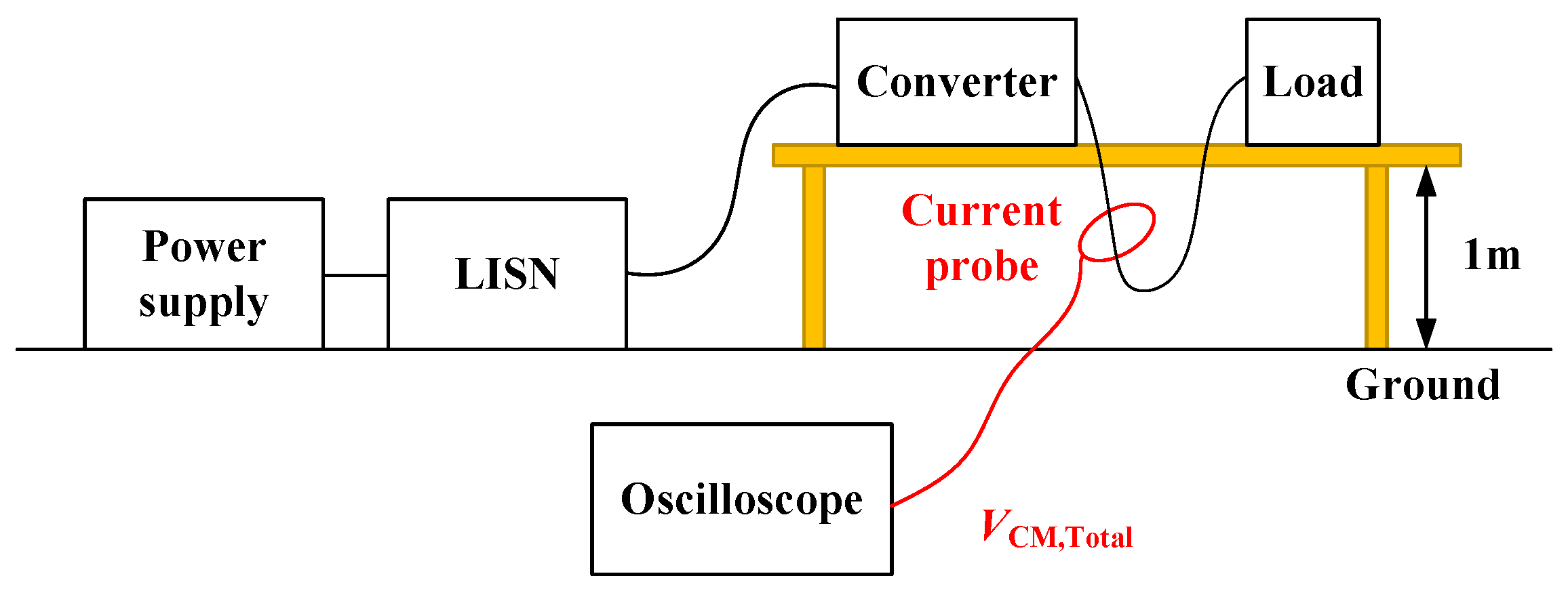
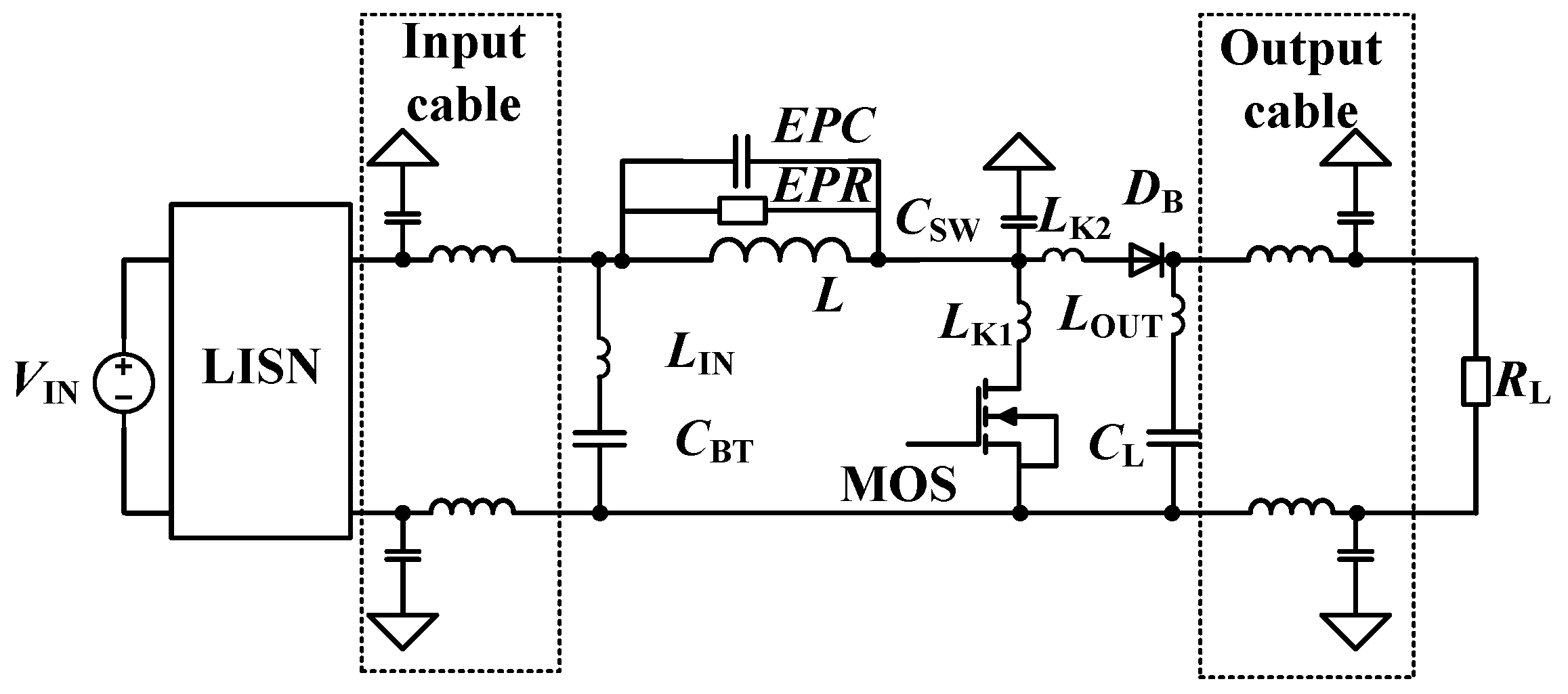
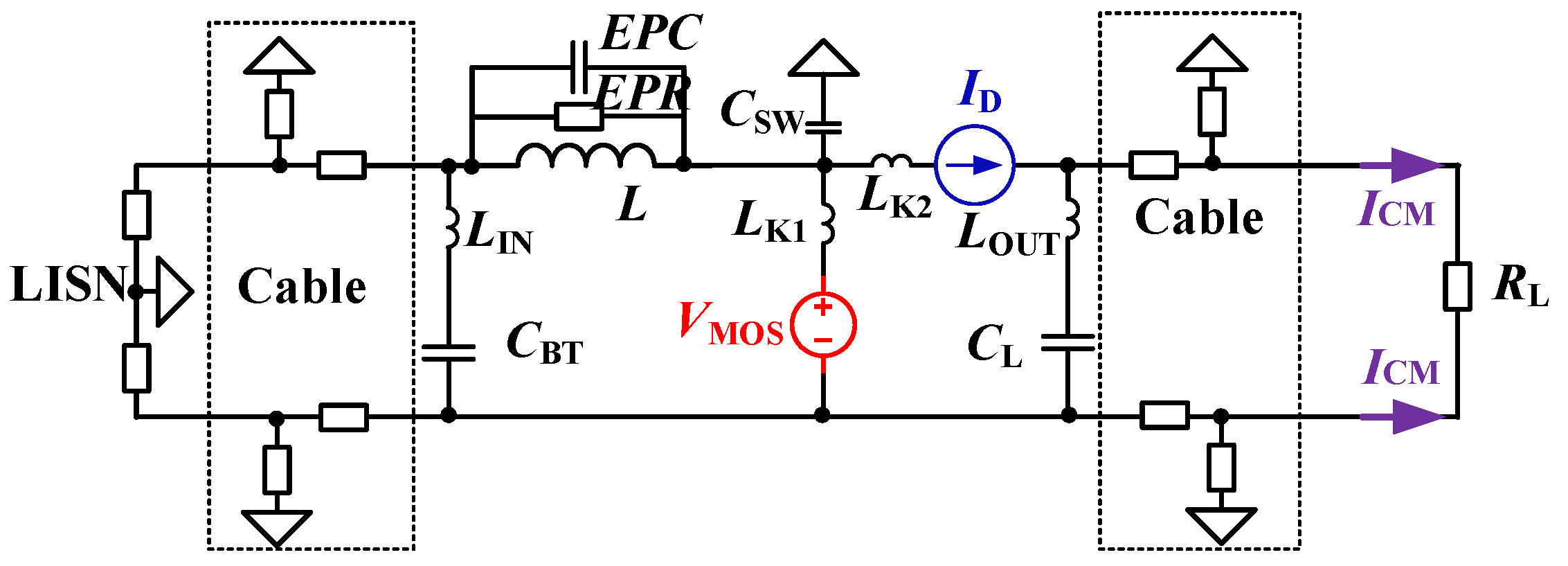
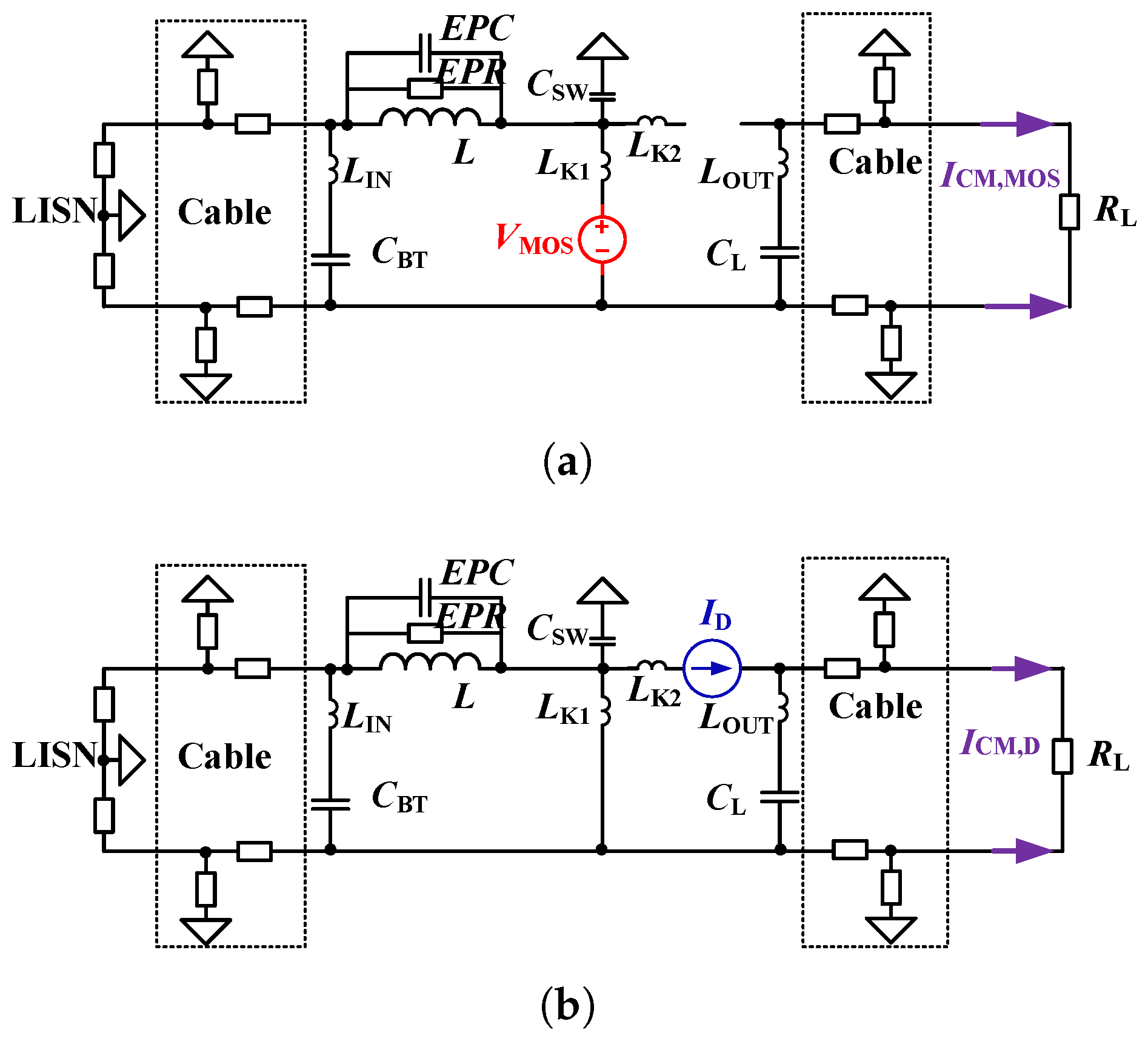



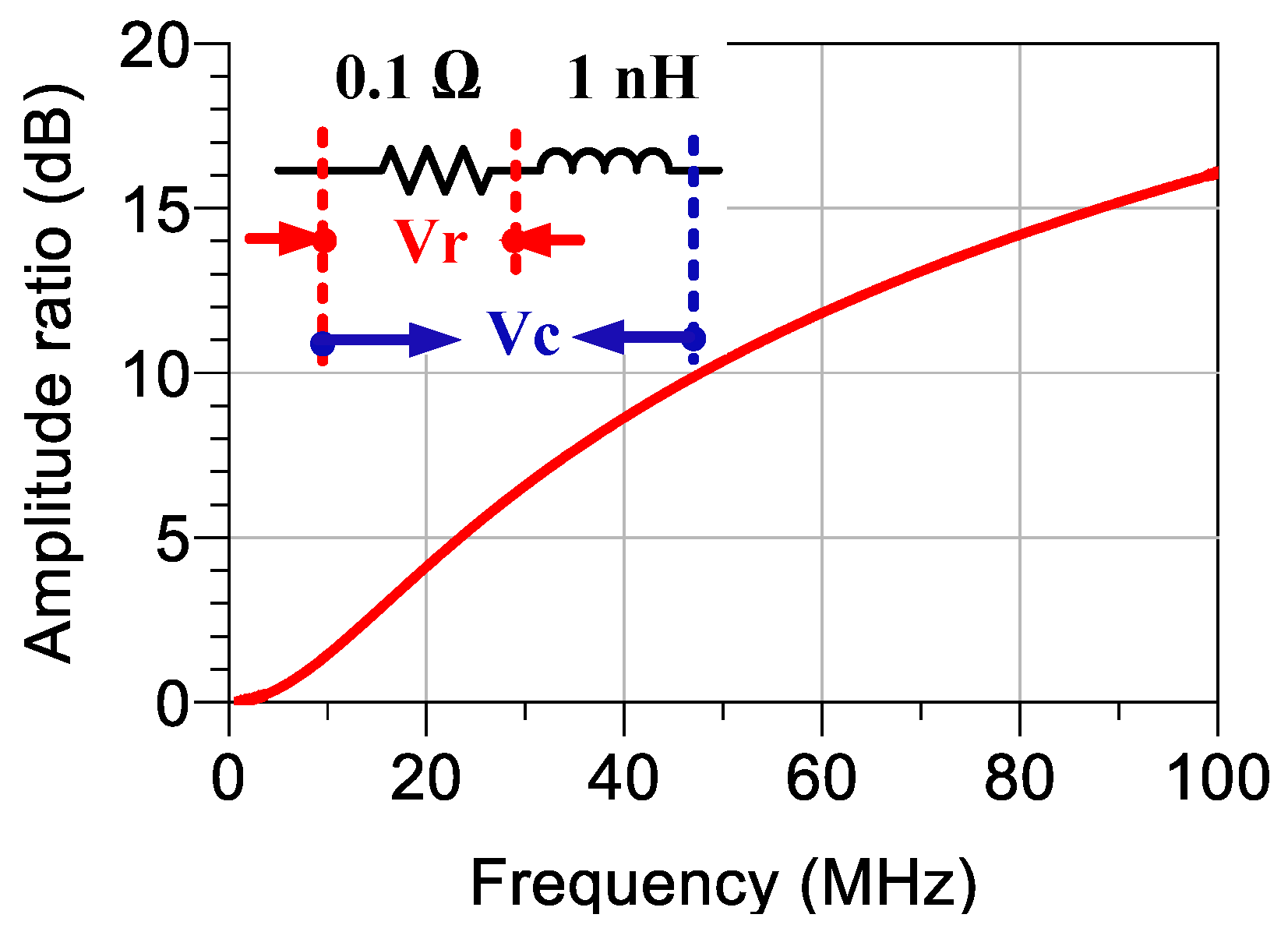



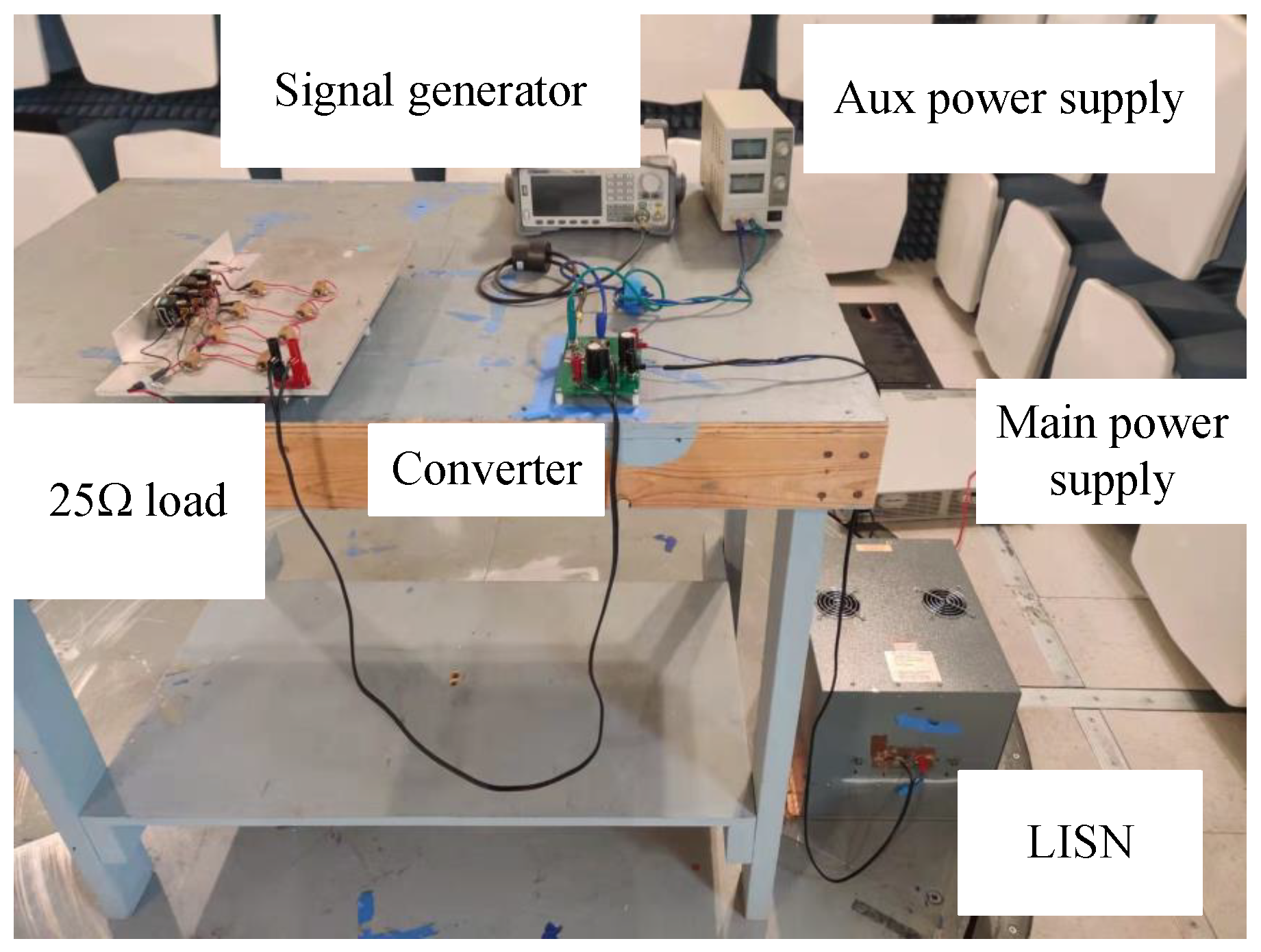
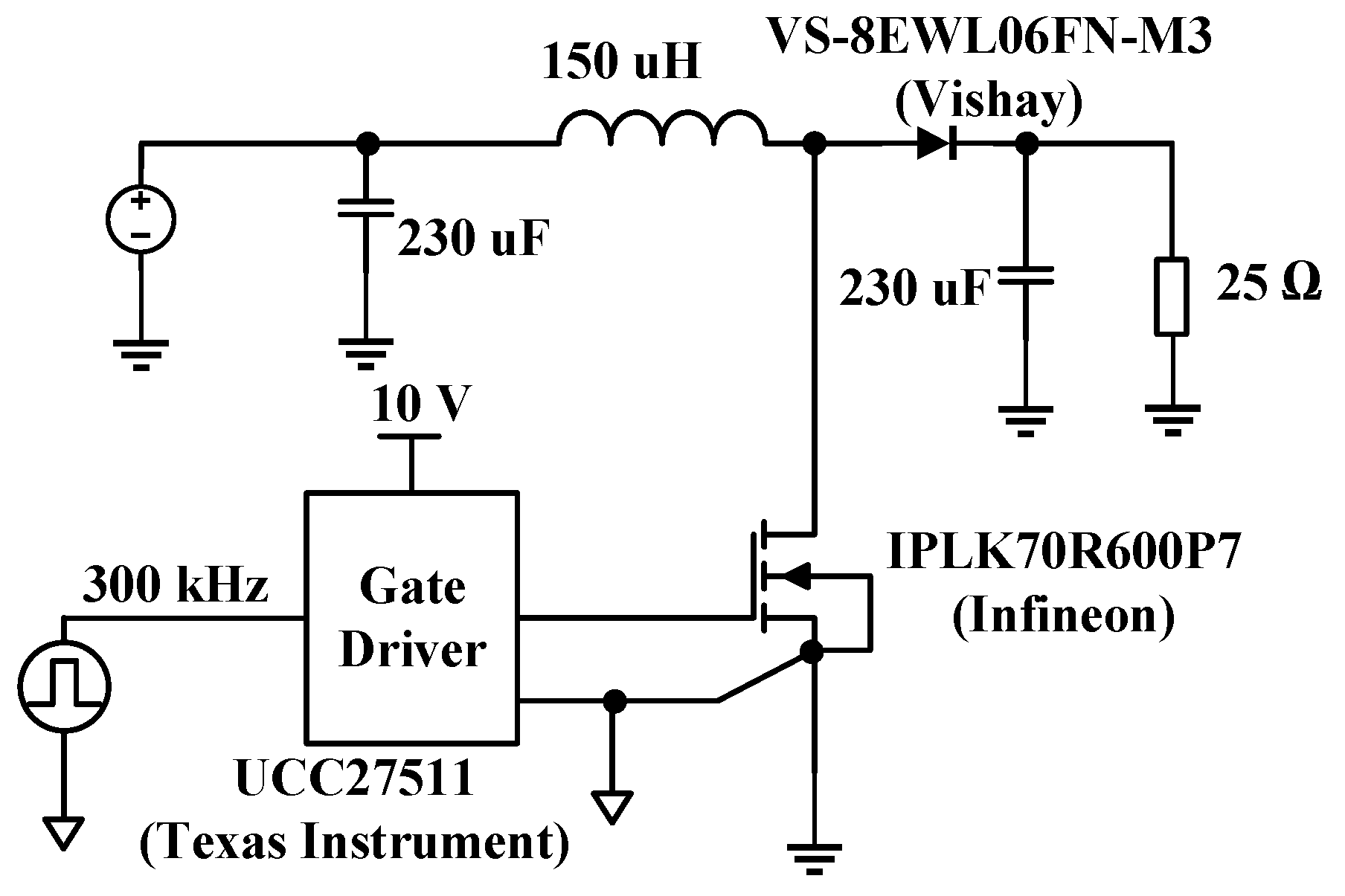
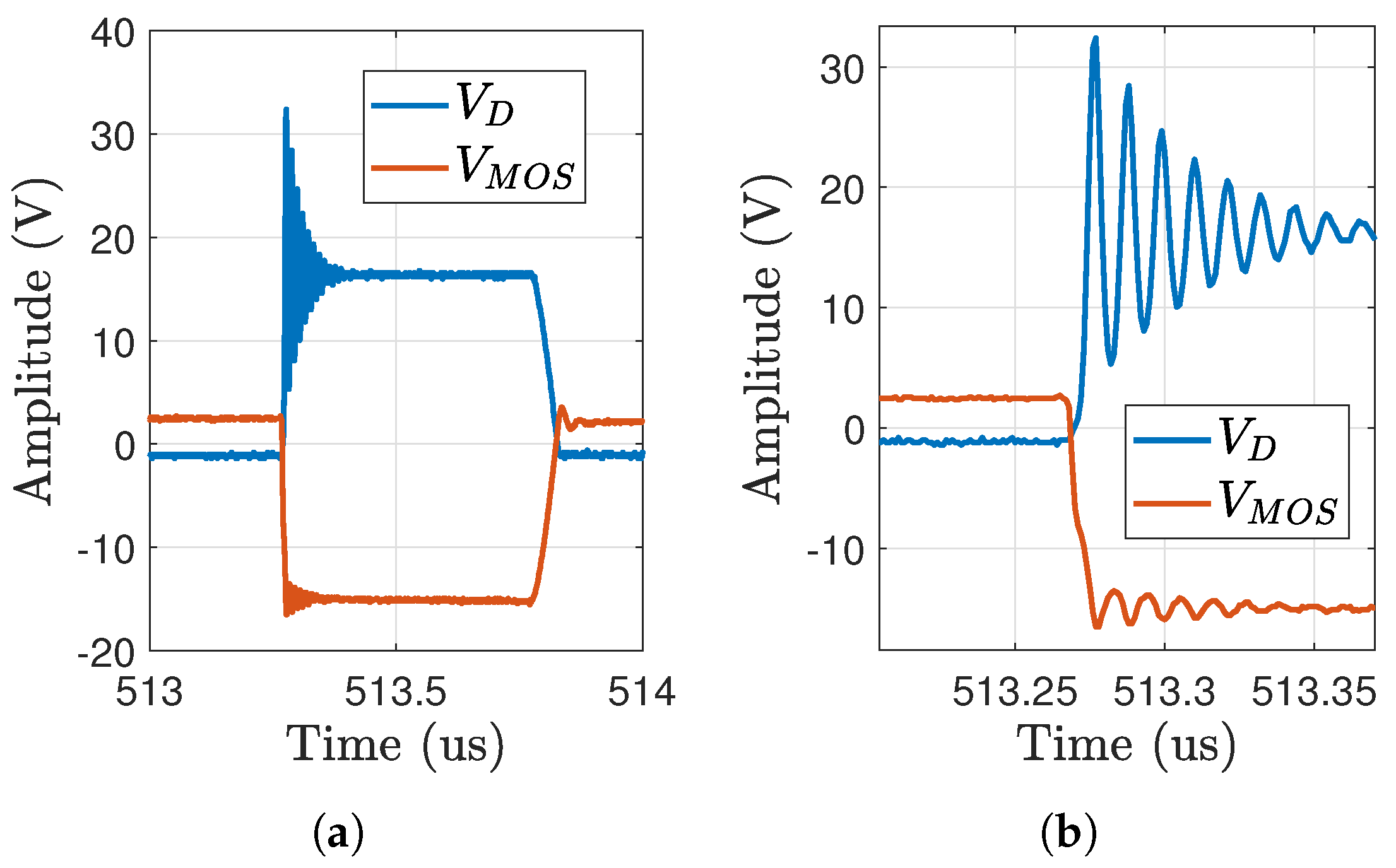

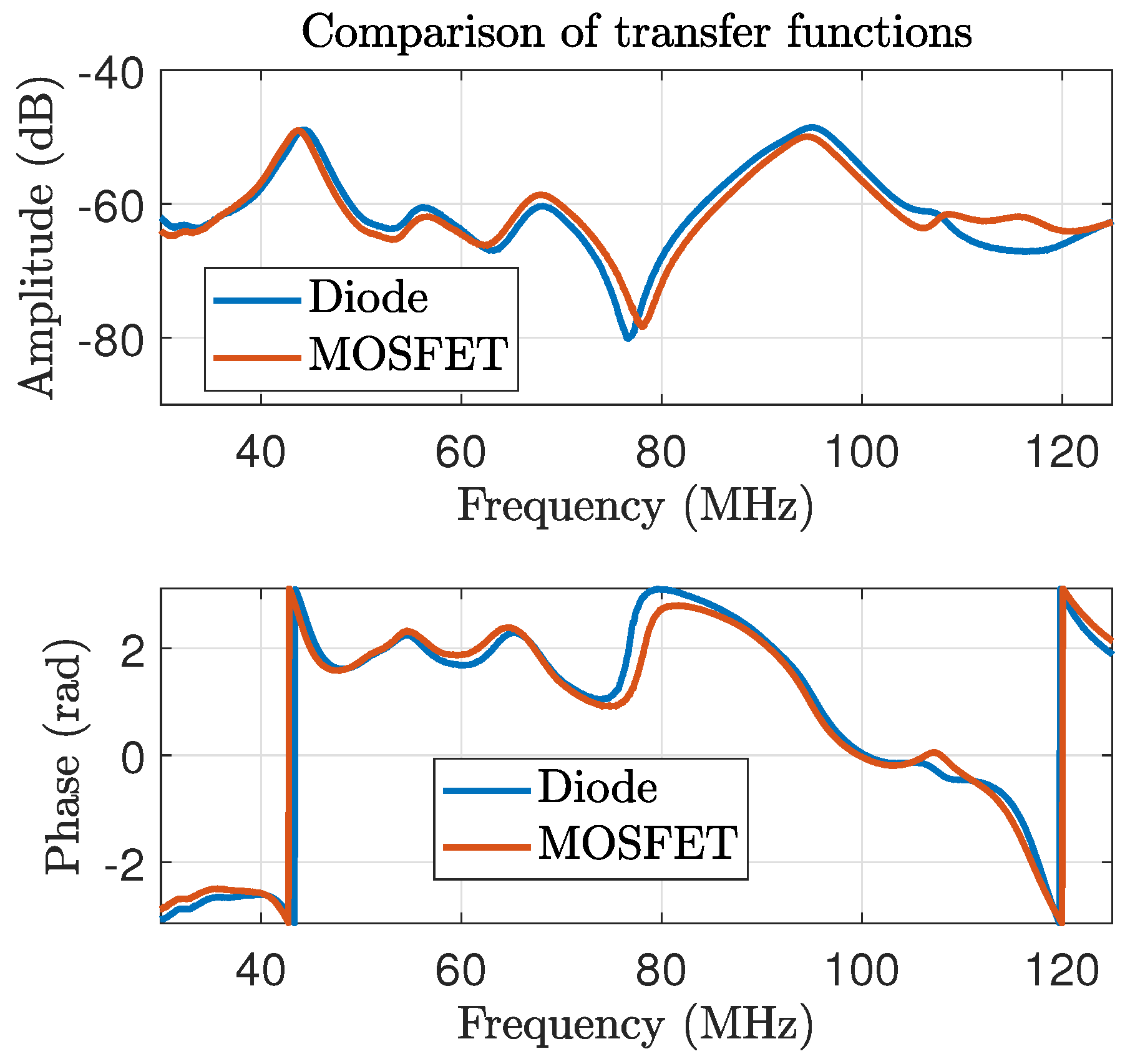
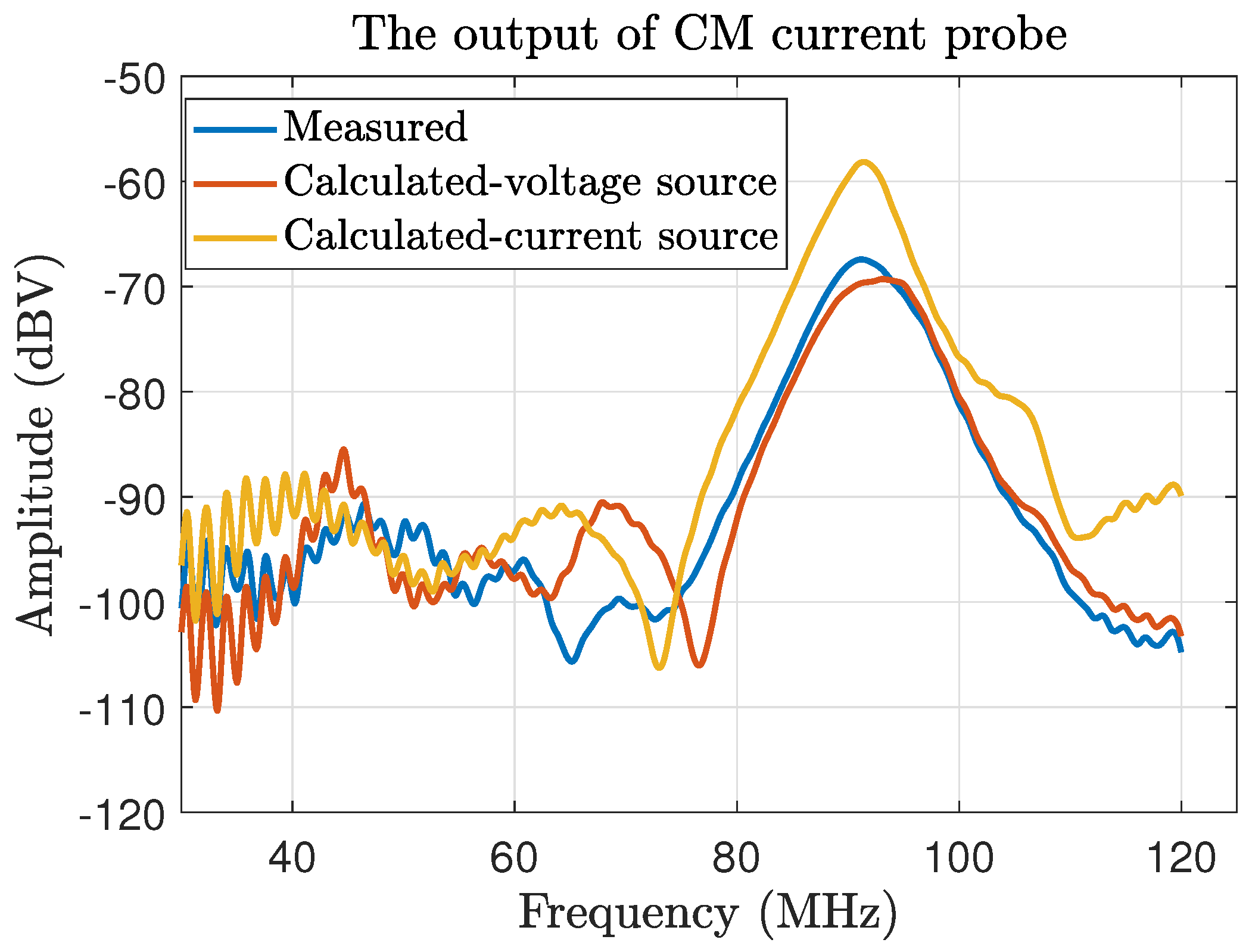
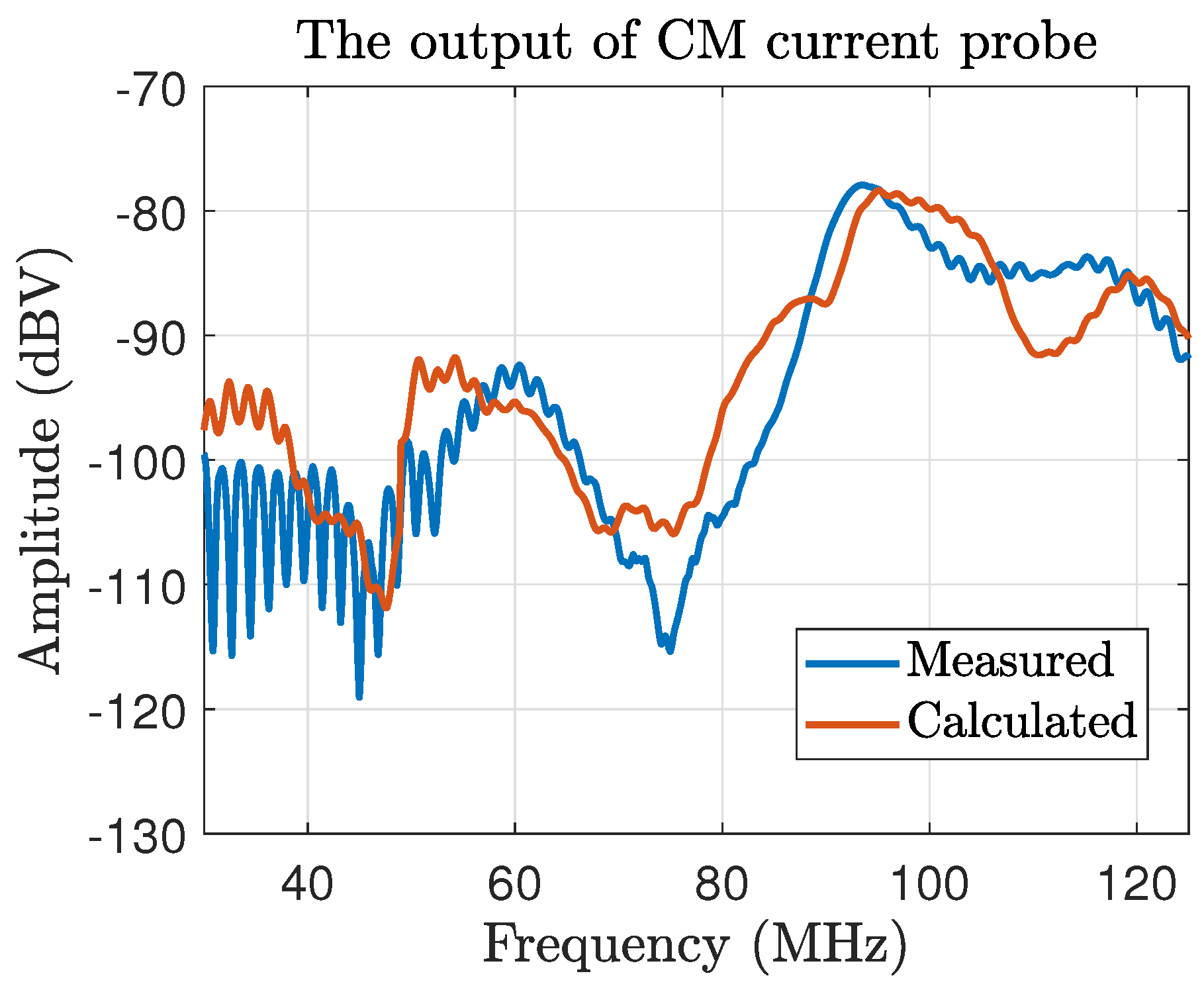

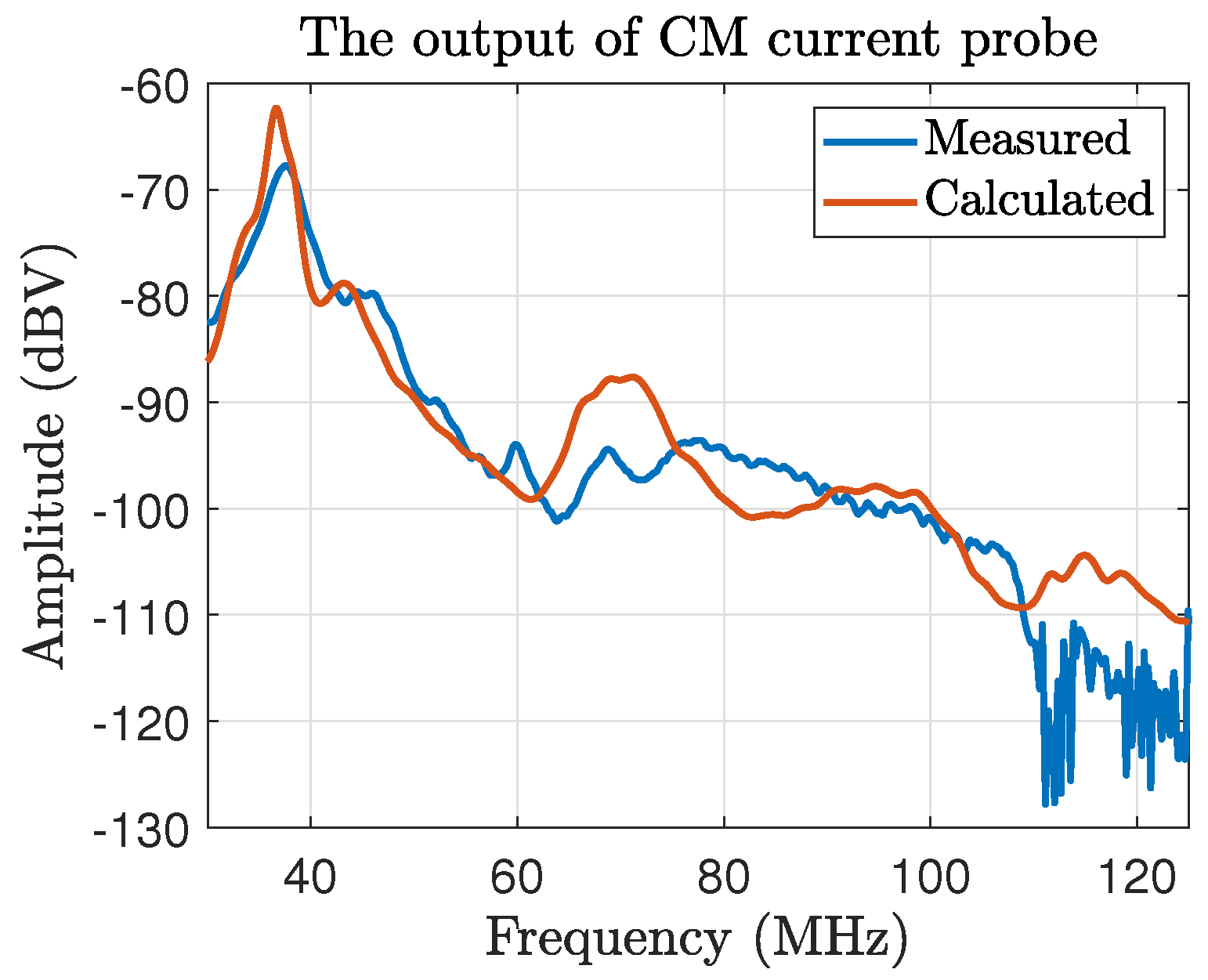

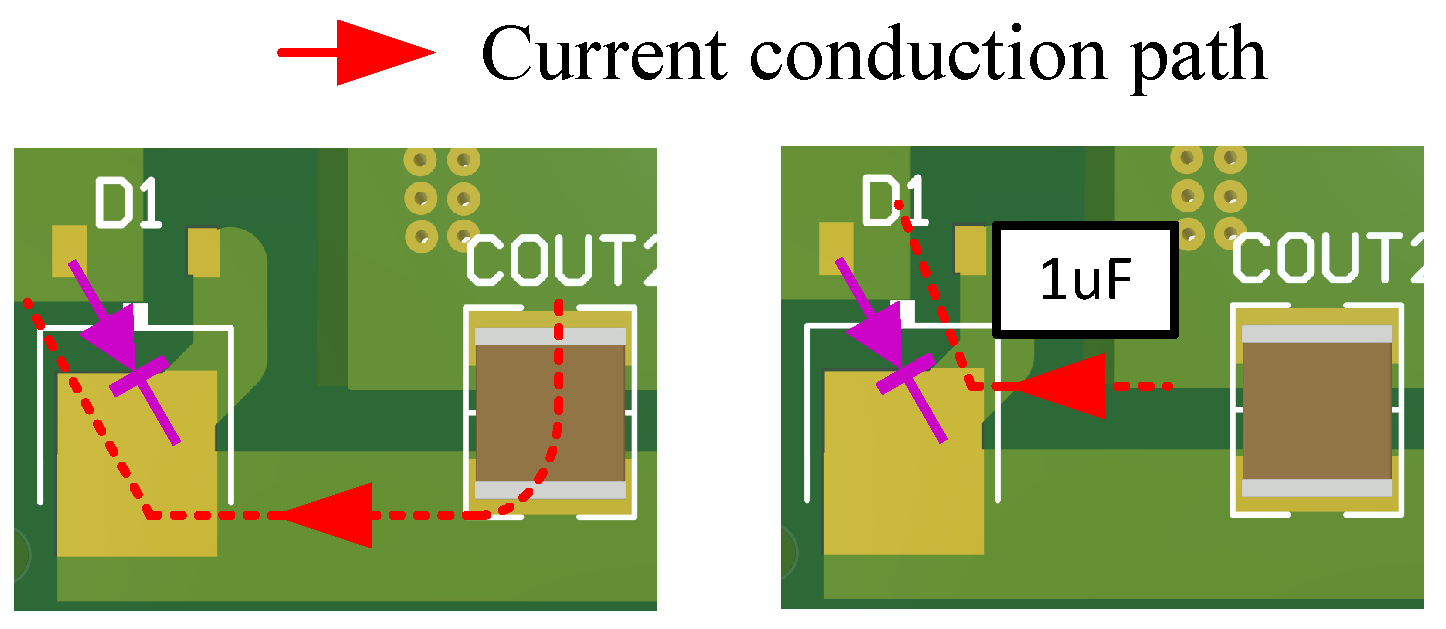
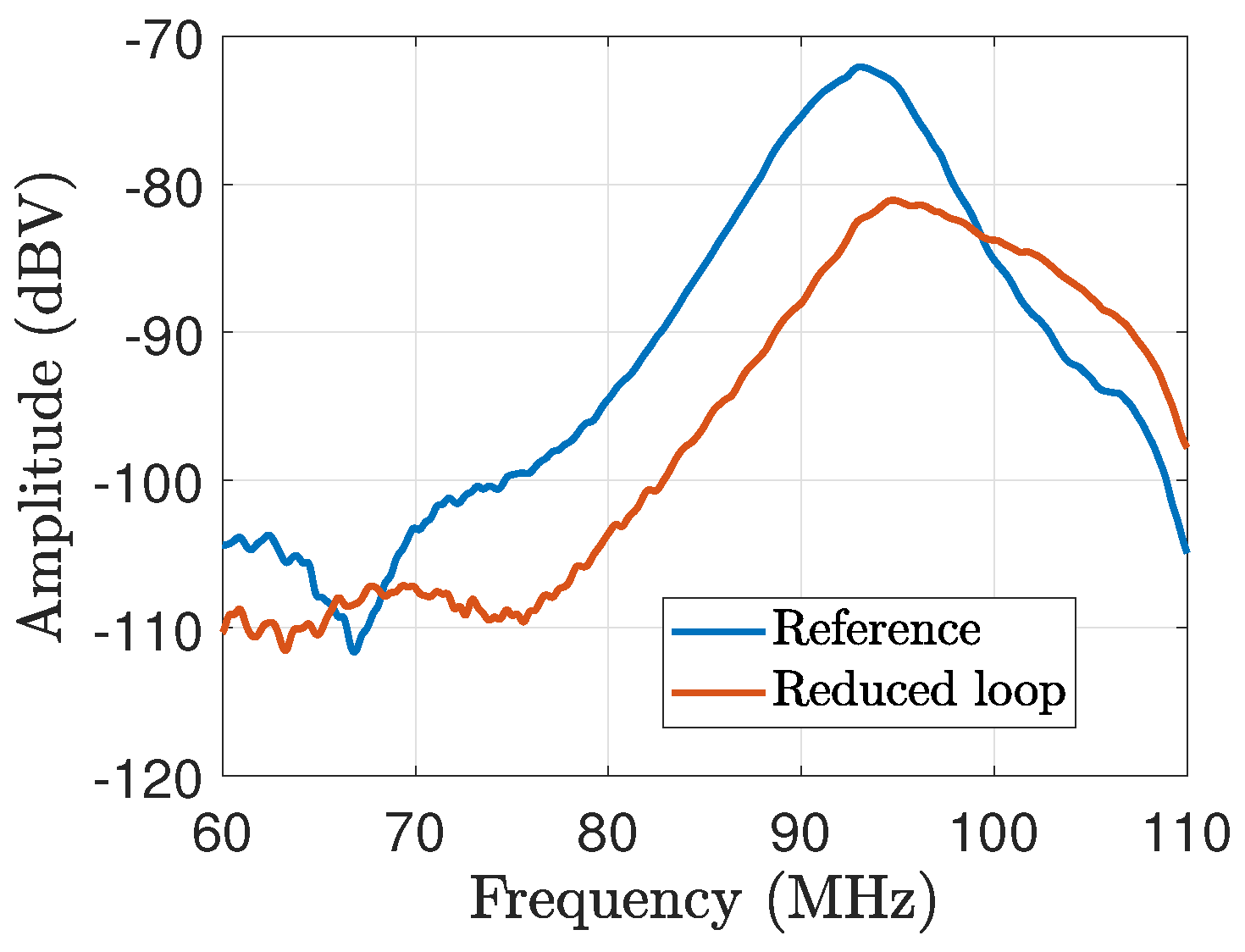
| Estimation Method | Advantages/Merits | Limitations |
|---|---|---|
| Two-step Method ([15]) |
|
|
| One-step Method (This work) |
|
|
Disclaimer/Publisher’s Note: The statements, opinions and data contained in all publications are solely those of the individual author(s) and contributor(s) and not of MDPI and/or the editor(s). MDPI and/or the editor(s) disclaim responsibility for any injury to people or property resulting from any ideas, methods, instructions or products referred to in the content. |
© 2025 by the authors. Licensee MDPI, Basel, Switzerland. This article is an open access article distributed under the terms and conditions of the Creative Commons Attribution (CC BY) license (https://creativecommons.org/licenses/by/4.0/).
Share and Cite
Huang, A.; Zhao, X.; He, Q.; Wu, H. Common-Mode Noise Estimation for a Boost Converter with Substitution Theorem. Electronics 2025, 14, 3375. https://doi.org/10.3390/electronics14173375
Huang A, Zhao X, He Q, Wu H. Common-Mode Noise Estimation for a Boost Converter with Substitution Theorem. Electronics. 2025; 14(17):3375. https://doi.org/10.3390/electronics14173375
Chicago/Turabian StyleHuang, Anfeng, Xidong Zhao, Qiusen He, and Haojie Wu. 2025. "Common-Mode Noise Estimation for a Boost Converter with Substitution Theorem" Electronics 14, no. 17: 3375. https://doi.org/10.3390/electronics14173375
APA StyleHuang, A., Zhao, X., He, Q., & Wu, H. (2025). Common-Mode Noise Estimation for a Boost Converter with Substitution Theorem. Electronics, 14(17), 3375. https://doi.org/10.3390/electronics14173375







